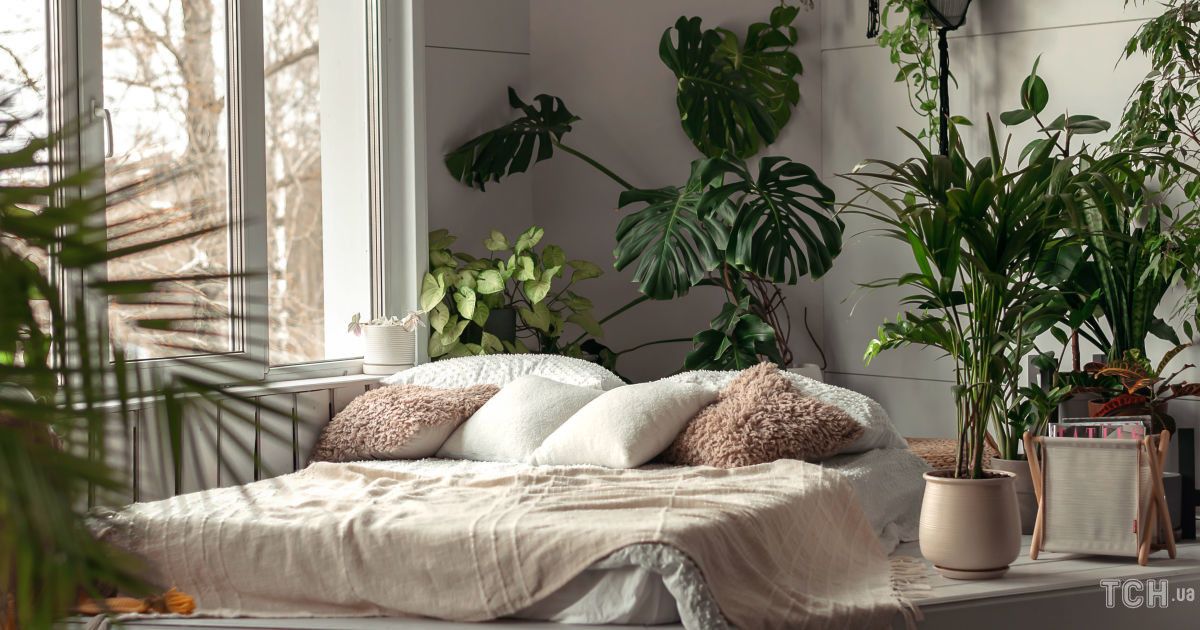As the days grow shorter and the temperature outside drops, taking care of our indoor jungle becomes more important to our mental comfort.
In our time, it is necessary to protect everything that brings joy.
So if you're a houseplant lover and worried about how they'll survive this winter, you'll be interested to know what care tips houseplant experts have to offer.
Gardens illustrated gave detailed recommendations on how to care for indoor plants in winter.
What indoor plants suffer from in winter
There are many reasons for illness and death of houseplants in winter.
Central heating dries out the air, wood stoves and open fires can make rooms too hot, and at night when they are not in use the temperature can drop too low for some houseplants, especially if they are hidden behind closed curtains.
Plants suffer from lack of light and drafts.
Also, if in winter you bring all the flowerpots that were on the balconies or terraces into the rooms, the plants also begin to suffer from overcrowding.
Therefore, it is very important to follow all the recommendations for the care of indoor plants in winter to give them the opportunity to last until spring, when milder temperatures, bright sun and fresh air will give them new strength for growth and flowering.
Photo: Credits
Increase the humidity around your houseplants
One of the best ways to combat the dry air that comes with central heating is to group houseplants together to create their own humid microclimate.
Put the pots on a tray filled with wet pebbles, sand or expanded clay stones, and the water, evaporating, will moisten the air.
Kitchens and bathrooms can also be great places for plants that need to increase humidity.
You might think that spraying is the solution to dry air, but unfortunately, it's such a short-term humidification that it doesn't really help the plants, and wetting the leaves can trigger fungal diseases.
Also, take a closer look at the place where the flower pots are placed.
Shelves above batteries mean the correct death of most houseplants, and windowsills that leave plants in the cold behind curtains will be a very poor choice for tropical and subtropical species.
If you have succulents and cacti, the regime they need in winter is a little different, they will benefit from a cool room with bright light, so if you have a spare room or a south-facing veranda, move them there.
Take care of the lighting
Moving houseplants closer to windows in winter will help them catch all the available light, as will pulling back curtains, tulle and blinds every time the sun comes up.
LED lights can be set to turn on when it's dark, so you don't have to turn them on and off.
Choose lamps labeled "full spectrum" if you want to avoid that pinkish-purple glow that neighbors may mistake for a part-time cannabis grower.
Of course, in our conditions, no one can guarantee that electricity will be available when plants need it, but you can try, especially since they do not consume a lot of electricity.
Most indoor plants should be placed at a distance of about 30 cm from the light source: succulents can be placed a little closer.
Photo: Credits
How to water indoor plants in winter
In winter, the growth of most indoor plants slows down a bit, some go completely dormant.
As a result, they need less water and nutrients.
Waterlogged roots are the main cause of plant death, especially cacti and succulents.
If your cacti and succulents are at normal room temperature, they will only need to be watered in the colder months when their soil is almost completely dry.
In an unheated room, they may not need water at all.
Photo: www.credits
How to protect indoor plants from pests
Winter can cause stress in indoor plants, and stressed plants are much more prone to pest attacks.
In addition, if you moved flower pots from an open balcony into the room in winter, they could bring pests or diseases with them.
Inspect the bottom of the pots for hidden slugs and check the leaves carefully for aphids and spider mites, paying particular attention to the undersides of the leaves and any new growth.
The earlier you detect an infection before it takes hold, the easier it is to deal with it.
Buy a product that is safe for children and pets at the garden center and can be sprayed regularly on plants to control spider mites, aphids, thrips, etc.
Wiping the leaves regularly with a damp cloth is a good practice for houseplants, whether you have pests or not, because it helps keep the stomata (breathing holes in the leaves) free of dust and other debris.
It may seem routine, but treat it like a mindfulness exercise or a kind of meditation.
Read also:
How to grow violets: a few important rules
Deadly: Houseplants to keep away from cats and dogs
How to care for orchids in winter: five simple tips
